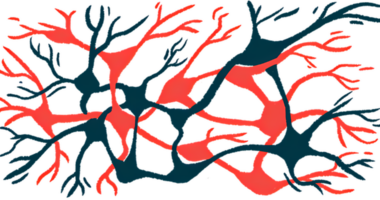Fruit-fly study on circadian clock offers clues about Parkinson’s risk
Circadian disruptions may promote damage to dopaminergic neurons at night

Interfering with the circadian clock, or the body’s internal clock, may make dopaminergic neurons — the nerve cells that become progressively lost in Parkinson’s disease — more prone to damage at night, according to a study in fruit flies.
“Our results further suggest that genetic variations in circadian clock genes may represent a risk factor for dopaminergic neurodegeneration,” Emi Nagoshi, PhD, who led the study, said in a press release.
While the study was done in flies and further research is needed to translate these findings to human patients, the results suggest that a disruption of the circadian clock may contribute to neurodegeneration.
“We now need to ascertain the relevance of these results in humans,’’ added Nagoshi, who is an associate professor at the department of genetics and evolution at the University of Geneva, in Switzerland.
The study, “Circadian clock disruption promotes the degeneration of dopaminergic neurons in male Drosophila,” was published in Nature Communications.
Loss of dopaminergic neurons characterizes Parkinson’s
The hallmark of Parkinson’s is the loss of dopaminergic neurons, the nerve cells responsible for producing dopamine, a chemical that plays a key role in the control of muscle movement. The loss causes not only motor, but also nonmotor symptoms.
Many people with Parkinson’s experience trouble sleeping, which could manifest as difficulties in falling asleep, staying asleep, or getting restful sleep.
It is thought that trouble sleeping may come from a dysregulation of the body’s circadian rhythm, or the natural, internal biological clock that regulates various physiological and behavioral processes over a 24-hour cycle.
However, it is not clear if problems with the circadian clock cause dopaminergic neurodegeneration or are instead a consequence of neurodegeneration. To know more, Nagoshi’s team used a fruit fly as a model to study Parkinson’s.
The researchers caused the loss of dopaminergic neurons by exposing adult flies to hydrogen peroxide, a chemical that induces oxidative stress. This is a type of damage that occurs due to an imbalance in oxygen species in the body’s cells.
A piece of paper soaked in hydrogen peroxide was left in a container with flies for four hours at six different times around the clock in a cycle consisting of 12 hours each of light and dark. The flies were then moved to fresh containers before the number of dopaminergic neurons was counted.
In fruit flies, most dopaminergic neurons reside in the brain’s protocerebral anterior medial (PAM) cluster. This cluster contains about 130 dopaminergic neurons with known roles in learning, foraging, sleeping, and moving.
… genetic variations in circadian clock genes may represent a risk factor for dopaminergic neurodegeneration.
“We waited seven days to observe the survival of the targeted neurons under the microscope, and we found a greater number of destroyed dopaminergic neurons when the exposure had been made during the night hours,’’ said Michaëla Dorcikova, PhD, first author of the study.
Genes control the circadian clock by turning specific proteins on and off in a 24-hour cycle. These proteins interact to regulate processes like sleep-wake patterns, responding to internal and external cues, and helping the body align with the day-night cycle.
To understand whether the loss of dopaminergic neurons depended on the circadian clock, the researchers used flies lacking the circadian clock gene per.
Compared with wild-type (normal) flies, mutant ones had fewer PAM neurons and their number dropped over time. Moreover, mutant flies were more sensitive to oxidative stress, but not when they were in total darkness around the clock.
“These findings suggest that the circadian clock gene per controls the magnitude and temporal variations of PAM neuron sensitivity to oxidative stress,” the researchers wrote.
The “disruption of circadian clocks interferes with the development of DA [dopaminergic] neurons in the PAM cluster and accelerates their age-dependent degeneration,” they added.
Exposure to hydrogen peroxide for four hours resulted in the loss of about 10% of PAM neurons. To find out if this loss caused motor and nonmotor symptoms, the researchers measured the amount of time flies slept or were active.
Loss of PAM neurons resulted in an increase in total sleep duration both during the day and night, yet the mean duration of each sleep episode increased only at night, particularly in older flies. There were no changes in overall activity levels.
Flies lacking circadian clock gene had significantly shorter lifespans
Flies lacking the circadian clock gene per also had a significantly shorter lifespan than wild-type flies, indicating that oxidative stress combined with a disrupted circadian clock may lead to earlier death.
Parkinson’s is believed to be caused by a number of genetic and environmental factors working in combination. This is called the “multiple-hit” hypothesis.
To test this hypothesis, the researchers counted PAM neurons in flies exposed to hydrogen peroxide (considered a single-hit) as they aged. After seven days of treatment, there was a significant difference between the treated and control groups. This difference persisted for at least 56 days, and there was no acceleration of neurodegeneration in either group.
“Our findings are consistent with the multiple-hit hypothesis and suggest that genetic variations in circadian clock genes might represent a risk factor for dopaminergic neurodegeneration,” the researchers concluded. “These findings might also be relevant in humans.”








